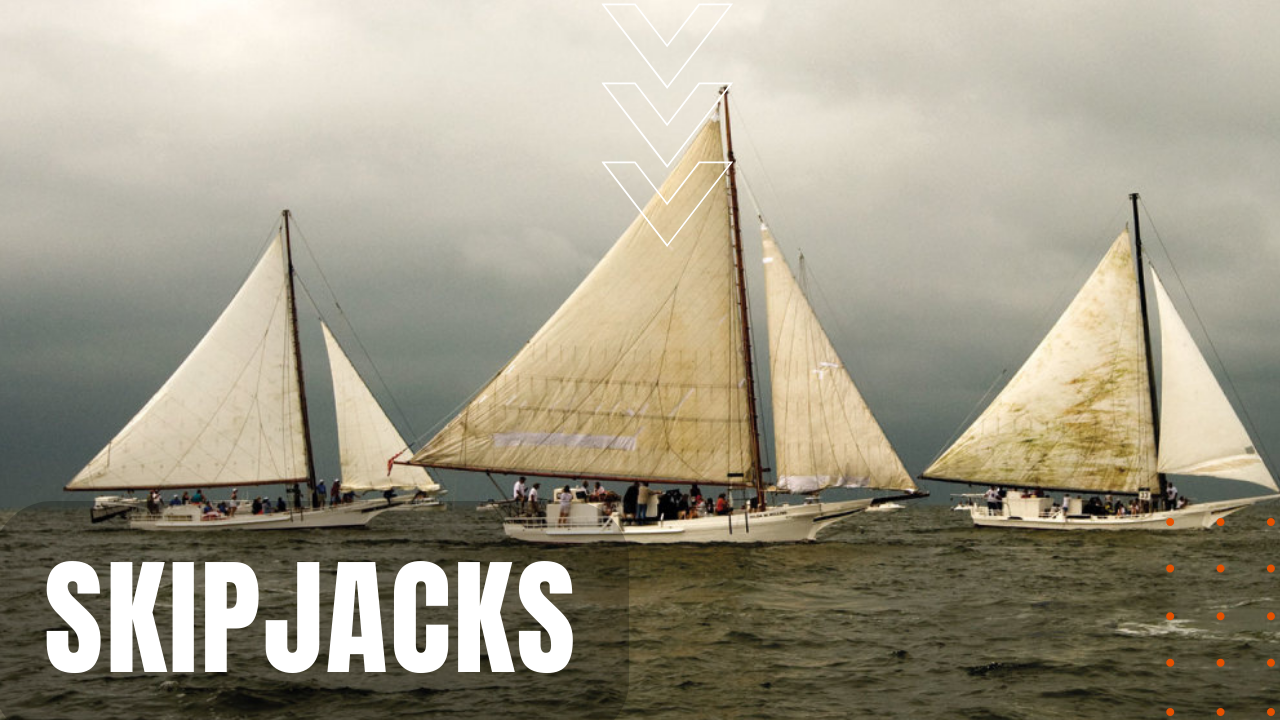Skipjacks of the Chesapeake Bay

Beginning as far back as the seventeenth century, European settlers discovered enormous oyster reefs beneath the shallow waters of the Chesapeake Bay, so expansive that they posed navigational hazards to their ships. The result was a boom for the Chesapeake oyster industry, which rose from 1.5 million bushels harvested in the 1850s to over 20 million bushels by the 1880s, making the Bay’s oyster fishery one of the most important industries in the United States by the turn of the twentieth century.
Search for Efficiency
The massive increase in demand led watermen, as they’ll still known, to call for a more efficient sailboat to harvest ever-increasing payloads of oysters, leading to the introduction of the Chesapeake Skipjack by the 1890s. While the name skipjack remains highly debated—some point to the skipjack tuna or mackerel that jump in and out of the water, much like watermen who make continuous passes or “licks” over oyster beds, while other cite the name “jack,” which was an early English name for a common sailor or seamen. Skipjacks are relatively light with wide beams, hard chines and low freeboards for working the Bay, costing ambitious watermen an affordable $3,000 by 1905.
End of an Era
Powerful even in light winds, yet capable of coming about quickly without losing way, during their heyday, as many as 2,000 skipjacks plied the waters of the Chesapeake Bay. A significant drop in oyster prices in the early 1900s saw many watermen abandon both their skipjacks and their occupation, and while prices rose again after WW2, few new skipjacks were ever built, while the population of oysters on the Chesapeake has fallen dramatically due to pollution, disease and over fishing.
Saving an Important Symbol
Today, only 30 skipjacks remain on the Bay—many lovingly restored by enthusiasts and museums—while less than a dozen continue to ply the trade of oyster fishing on the Chesapeake. Thanks to the skipjack’s symbolic importance to the history and culture of the Chesapeake, in 2001, with funding from The Maryland Historic Trust, the National Trust for Historic Preservation, and numerous private businesses, skipjack restoration projects are underway at the Chesapeake Bay Maritime Museum, making the Chesapeake skipjack, a much beloved throwback to a simpler time in American history.
